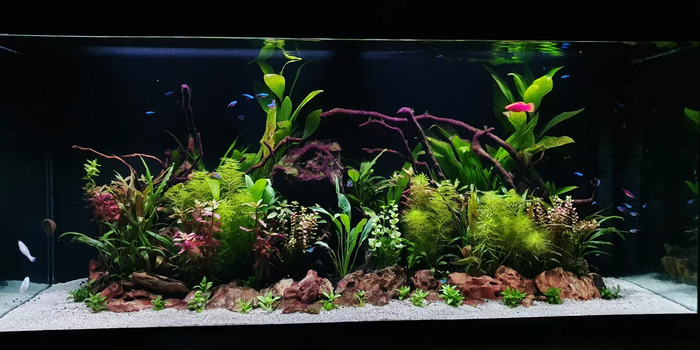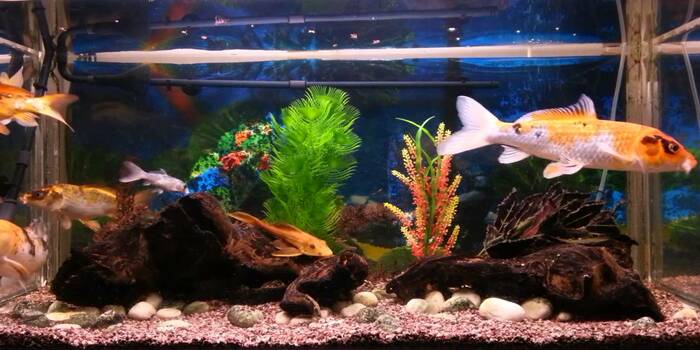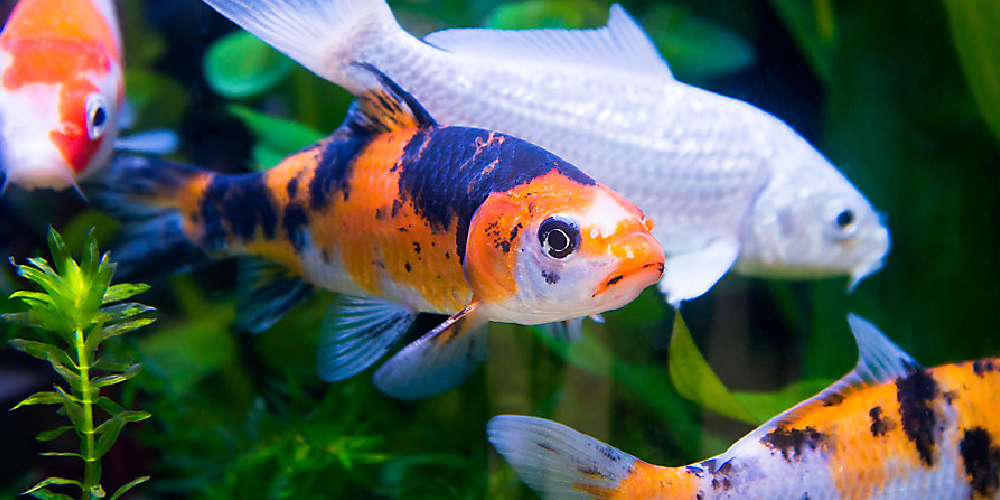
- 100% Live Arrival Guarantee & Free Shipping

People love adding a fish tank to their homes to make it look more interesting and add a vibe of marine life. Although fishes can survive in a tank, some fish die sooner than expected because the conditions in tanks are not fit for them. Tanks have a different ecosystem to which any fish needs to adapt. Hence, knowing which one will be good at adapting to your tank is better than adding just about any fish and waiting for it to respond.
Koi fish is a popular fish people want to keep in their backyard ponds and indoor tanks. Their unique colors and designs bring cheerfulness to the environment. However, even if you have a beautiful, well-designed pond or tank, keeping a koi may not be for you. Even people who have a koi pond may not know whether their fish will survive in the pond long enough or not.
Hence, learning more about the koi fish can help you help Koi survive better, even if your tank is small. It is one of the most beautiful fishes one can get for their ponds; however, they have a sensitive nature.
This is a big question- can Koi fish survive in a tank?
To give you a short answer, yes, they can survive in indoor tanks.
If you are thinking of getting a koi fish, remember to take care of them to keep them alive. Once you look after their basic needs; that is when your fish will survive for the longest time in your tanks.
Take care of things like the size of the tank, the temperature of the water, water filtration for oxygen and cleanliness, proper diet, and water changes to maintain the tank environment. All these are essential to keep the fish healthy.
One of the advantages of keeping Koi Fish in a tank rather than a pond is when you place the tank in your room, you can show off their beauty to your guests and friends. An added perk is that you enjoy seeing your fish all year without the water freezing over in winters. In fact, most people tend to bring their koi fish from their outdoor ponds to their indoor tanks in the winter season to keep a closer look at their well-being.
One of the biggest attributes of koi fish is that although it looks like a goldfish, it is much larger in size, so having a bowl for Koi will not be a good idea. Take your Koi size into consideration when getting the tank.
A well-fed and cared-for fish can grow to a reasonable size of 24 inches in length, and there are some koi have even grown up to 36 inches. An average domesticated Koi can grow up to 1 foot long, so these are not your average small fishes.
The truth is that Koi’s growth depends on the size of their tanks; however, this does not mean you can get a huge tank just because you don’t want to hamper their growth.
There are a few things you need in your Koi tank:
A few fishes can live with Koi fish in a tank. Select the most friendly ones and introduce them to your Koi tank.
Barbels can grow up to 40 inches and live up to 20 years. Since their size is similar to Koi fish, they are an excellent option to become Koi tank mates. They eat at the bottom; hence clean the tank when the koi fish is done eating its food.
Tinfoil Barbs are native to Indonesia and Sumatra. Since they are not territorial and are friendly fish, they are a good option as Koi tank mates. They are roughly 8 inches long and do not need much water volume. The smaller varieties that are just over 2 inches can not co-exist with Koi and will probably be hunted by Koi.
The most common and obvious tank mate for Koi is the goldfish. Goldfish and Koi resemble not just on the surface but also in characteristics and requirements. However, fancy goldfish can become food for Koi as they are a slow species. Other species of goldfish happily co-exist with Koi.
An average koi can live up to 70 years in tanks, and some Koi in Japan have lived up to a hundred years. It all depends on the level of care they receive. However, it is not wise to keep Koi fish in the tank with too many other koi fishes. Overcrowding a tank can affect the tank’s health and invite unnecessary diseases.
As stated above, it is essential to give Koi some room to grow and move about. If your tank is overcrowded, that will not be a good condition and can harm Koi due to the toxic ammonia buildup in the water. No matter how well your filtration system works, a crowded tank invites problems for Koi.
Ensure you have the right filter system in your tanks. The filtration must process about 250 gallons of water per hour for a 12-inch koi fish. Koi tend to eat frequently and produce a lot of waste. It is important to not overfeed them and regularly clean their water.
There is no rocket science behind feeding Koi in a tank. Koi eat frequently. It is vital to give it food with a complete nutritional profile and benefits for your fish. Koi enjoys pellets, fresh greens, fruits, and even some cereals.
However, Koi-designed pellets are simpler to dispense and have all the nutrition the fish needs to grow and thrive. The best koi pellets will have a balance of carbs, fats, and proteins.
To help Koi grow to their optimal size, feed it three to four times per day in perfect water temperatures. Koi’s metabolism depends on the temperature of the water. Feeding them in cold water will either result in no food intake or, if they do feed, in your fish getting sick. If the temperature is too hot, the water loses oxygen, and the fish can not breathe, making feeding difficult again.
If you have a small tank, ensure that you do not feed Koi too much because that will leave unwanted food in the tank creating a mess. If you have a small tank, the ideal feed is once per day, which is more than enough, and this will allow them to cut down on their waste in the water.


